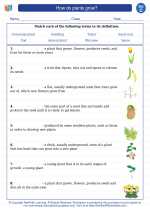How Do Plants Grow?
Plants grow through a process called photosynthesis. This is the method by which green plants and some other organisms use sunlight to synthesize foods with the help of chlorophyll. Photosynthesis is essential for the growth and survival of plants. Let's break down the process of plant growth into key components:
1. Germination
Plant growth begins with the germination of a seed. When a seed is provided with the right conditions, such as water, warmth, and oxygen, it begins to sprout. The seedling emerges from the seed and starts to grow roots downwards into the soil and shoots upwards towards the light.
2. Water and Nutrient Absorption
Once the seed has sprouted, the roots absorb water and nutrients from the soil. This water, along with the nutrients, is essential for the plant's growth and development. The root system expands to provide stability and absorb more water and nutrients for the plant.
3. Photosynthesis
Plants use a process called photosynthesis to create their own food. With the help of chlorophyll, which gives plants their green color, they absorb sunlight and convert carbon dioxide and water into glucose and oxygen. This process occurs in the leaves of the plant and is crucial for the plant's growth and energy production.
4. Growth and Development
As the plant continues to photosynthesize and absorb water and nutrients, it grows in size and develops new leaves, stems, and flowers. The plant's cells multiply and expand, leading to visible growth and changes in the plant's structure.
5. Reproduction
Once the plant has matured, it may produce flowers, which contain the plant's reproductive organs. Pollination occurs when pollen from the male reproductive parts of a flower is transferred to the female reproductive parts, leading to the formation of seeds. These seeds can then be dispersed and germinate, starting the cycle of plant growth all over again.
Now, let's review some key concepts about plant growth:- What is the process by which a seed begins to sprout and grow into a plant?
- What is the green pigment in plants that is essential for photosynthesis?
- Chlorophyll
- What are the two main products of the photosynthesis process in plants?
- What part of the plant is responsible for absorbing water and nutrients from the soil?
- Which process leads to the formation of new seeds for future plant growth?
◂Science Worksheets and Study Guides Third Grade. How do plants grow?
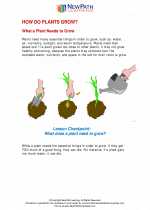
 Activity Lesson
Activity Lesson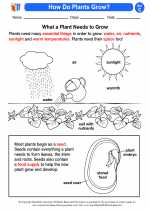
 Worksheet/Answer key
Worksheet/Answer key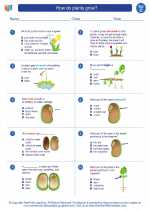
 Worksheet/Answer key
Worksheet/Answer key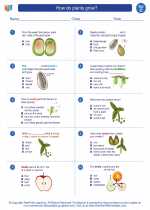
 Worksheet/Answer key
Worksheet/Answer key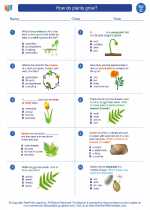
 Worksheet/Answer key
Worksheet/Answer key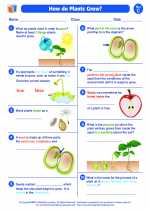
 Vocabulary/Answer key
Vocabulary/Answer key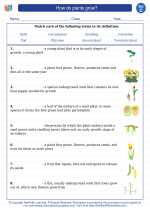
 Vocabulary/Answer key
Vocabulary/Answer key